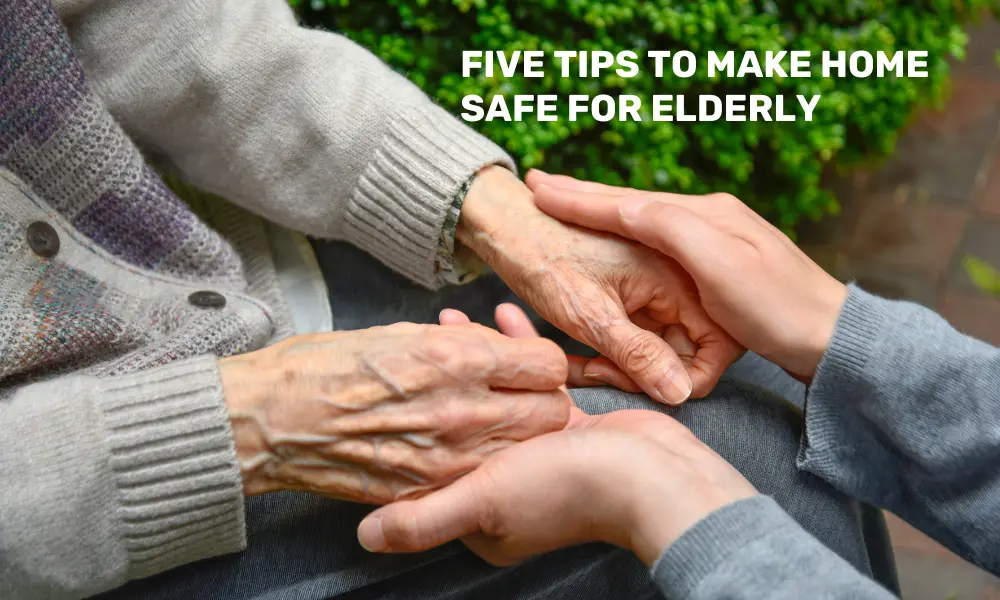As we age, we become highly vulnerable to getting injured due to minor falls or slips. Aging causes bone and muscle degeneration, leading to various health issues. Our elderly parents may have a higher risk of developing specific old age-related health issues that may include:
-
Dementia
-
Vision or hearing impairments
-
Diabetes
-
Anxiety or stress
While we provide the best healthcare to our family members, considering the infrastructural barriers that may pose an immense threat to our elderly parents is essential. However, enhancing our living spaces with basic amenities may not only offer safety and easy access to all the corners of the house but also make our home accessible to people with temporary injuries or small children and even make the space comfortable for pregnant women.
These solutions may ensure that an elderly person may no longer face the risk of a fall each time he or she has to use the toilet, do some chores in the kitchen, or move around the house. Here are five simple tips to make our home safe for the elderly:
-
Sufficient Lighting
Vision issues may be pretty common in old age. One needs to prioritize the visual comfort of elderly individuals with impaired vision. The entire house must be equipped with sufficient lighting, making it easier for the elders to move around quickly without feeling dizzy or being obstructed by furniture or any other object. This will substantially reduce their risk of falling and getting injured. Large windows, motion sensor lights, switchboards at convenient places, and other such ideas can help make the place safer for the elderly.
-
Wheelchair-Friendly Pathways
Someone who uses a walking aid or a wheelchair may find it difficult to navigate through the narrower pathways; in such cases, it is practical to eliminate barriers and obstructions and make the pathway broader. Certain wheelchair-friendly changes include:
-
Providing adequate seating space on the dining table for a wheelchair user.
-
Making doors and entryways wider.
-
Providing sufficient space in the house to maneuver wheelchairs.
-
Building accessible kitchens.
Additionally, carpets or rugs on the floor must be avoided, as they can obstruct the movement of wheelchairs and even increase the chances of someone tripping and falling.
-
Accessible Toilets
The elderly are more susceptible to bathroom accidents due to slippery floors or lack of support. Therefore, bathrooms are often considered one of the most vulnerable spaces for people with reduced or limited mobility, making it necessary to rebuild or construct accessible toilets in your home. An accessible family toilet is a specialized facility to meet everyone’s needs. A bathroom with key features such as grab bars, handrails, anti-skid flooring, emergency bells, and Western-style seating can help the elderly in a great manner. Additionally, wider gates for unrestricted movement while entering and exiting the restroom can help the elderly use wash-room freely.
-
Ramps and Lifts
Installing a sturdy ramp with handrails in the house is ideal. However, a ramp without a handrail may be hazardous because, with no support to hold, it may cause falls and injuries. Certain health conditions, like Osteoarthritis, can make it difficult for senior citizens to climb stairs. Therefore, one may consider installing a lift in the house if possible.
-
Accessible Kitchens
While designing the kitchen space, thoughtful consideration must be given to accessibility. This can include a layout with proper accessibility measures, like placement of appliance for easy access and lower sinks and counter tops to facilitate comfortable reach for elderly. Pull-out shelves and drawers can help eliminate the requirement for excessive bending or stretching.
Turning our homes into accessible spaces may involve time, investment, and planning. However, these changes may allow the elderly to move independently, regardless of mobility challenges.
Certain modifications may also bring emotional well-being and a sense of security in the daily lives of elderly. Additionally, building a home accessible now is making our house future-ready for ourself and the coming generations too.
Our elderly parents require extra care and company as they age. To learn about elderly care, CLICK HERE.





